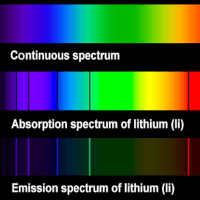Atomic Spectroscopy
Atomic Spectroscopy covers a range of analyses which all deal with measuring electromagnetic radiation which is absorbed or emitted by atoms.
Atomic absorption spectroscopy (AAS) introduces an atomized sample into a radiation source and measures the amount of radiation absorbed by the sample. The amount of radiation absorbed is proportional to atom concentration (application of Beers’ Law).
Atomic emission spectroscopy (AES) introduces an atomized sample into a flame which excites the anaylte. As the excited analyte atoms relax, they emit light at characteristic wavelengths that can be dispersed with a monochromator and detected.
Inductively Coupled Plasma Mass Spectrometry (ICP-MS) is also used to analyse metals present in an aqueous sample. ICP-MS works by using an Argon plasma to ionize samples which are then focused and passed through a mass spectrometer for identification.
Examples of all these instruments are covered in this site. Click on the links below for more information:
